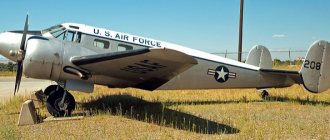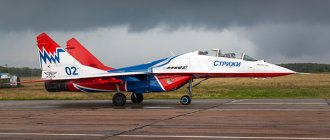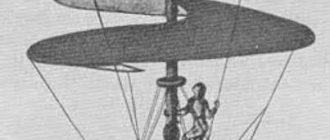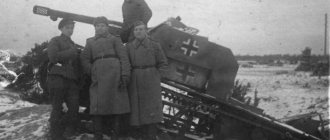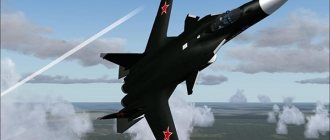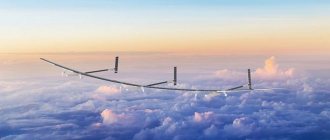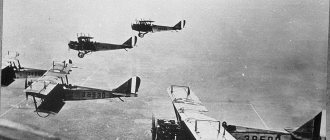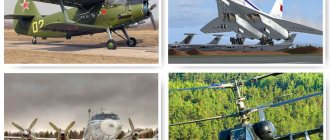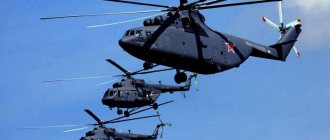Five of the most successful Antonov aircraft
On February 7, 1906, Soviet aircraft designer Oleg Konstantinovich Antonov was born. Antonov, who was passionate about aviation since childhood, founded an original school of design and created 52 types of gliders and 22 types of aircraft, including the largest and most heavy-duty ones in the world. His planes became sensations at international aerospace exhibitions, and the Soviet Union was recognized as a world leader in aircraft manufacturing. On the occasion of the birthday of the outstanding aircraft designer, we decided to recall his five most successful aircraft.
AN-2
This aircraft was included in the Guinness Book of Records as the only aircraft in the world that has been in production for more than 60 years. It has gained fame as an exceptionally reliable and safe machine, the design of which saves people even in emergency situations. The An-2 can land even on unprepared terrain without the help of ground navigation, is capable of taking off from any relatively flat field, and when the engine stops, the plane begins to glide. Over the years of operation, the An-2 has transported several hundred million passengers, millions of tons of cargo, and cultivated more than a billion hectares of fields. It was for agricultural work during the period of massive sowing of fields with corn that the An-2 received the popular name “corn farmer”. The An-2 was an obligatory participant in Soviet Arctic and Antarctic research expeditions. In 1957, he landed on the tip of an iceberg for the first time. The idea of the future An-2 came to Oleg Antonov back in October 1940, and then, under his leadership, a preliminary design of the aircraft was developed. Antonov’s idea was that the aircraft being created would occupy “in air transport approximately the same place that a lorry occupies in ground transport.” The designer himself called the An-2 his greatest success. Production and operation of the aircraft began in 1948. By the early 1960s, the An-2 connected more than half of the regional centers of the USSR with local air lines. By 1977, these aircraft served 3,254 communities. In total, more than 18 thousand An-2 were built, the aircraft was produced in the USSR, Poland and continues to be produced in China. The plane visited almost every corner of the globe. For the creation of the An-2, Antonov and his associates were awarded the USSR State Prize.
AN-6
The An-6 was developed by Antonov in 1948 on the basis of the An-2, from which the An-6 was externally distinguished by the presence of a meteorologist's cabin at the base of the keel. The aircraft was intended for high-altitude meteorological research and for use as a transport in high mountain areas. The aircraft was equipped with an ASh-62R engine with a turbocharger, which allowed the engine to maintain power up to an altitude of 10,000 m. The aircraft was produced until 1958; in total, several aircraft of this modification were built. It was on the An-6 on June 9, 1954 that pilots V.A. Kalinin and V. Baklaikin in Kyiv set an altitude record for this class of aircraft - 11,248 m.
AN-10
The development of the An-10 aircraft began in 1955 after the head of the USSR N.S. visited the design bureau. Khrushchev. During a conversation with him, Antonov proposed creating a single four-engine aircraft, but in two versions: passenger and cargo. Khrushchev approved the concept, and the An-10 made its first flight on March 7, 1957. The An-10 was designed so that in case of war it could be quickly converted into a cargo aircraft. The aircraft became the first airliner in the USSR with a turboprop engine and the first among such aircraft to be put into mass production. According to calculations, the An-10 in the late 50s was among the most profitable aircraft: the cost of transporting one passenger was significantly lower than on the Tu-104A, primarily due to its greater passenger capacity. In addition, there were only a few airports in the USSR capable of receiving Tu jets. The An-10 also had a rare combination of properties for a passenger airliner: high flight speed and the ability to take off and land on unpaved and snow-covered airfields with a small runway. Taking these features into account, Aeroflot operated the An-10 on short routes with poorly prepared and unpaved runways. The first flight of the Aeroflot An-10 took place on July 22, 1959 on the Moscow-Simferopol route. Until 1960, 108 aircraft were produced.
AN-14
The development of the light twin-engine multi-role short take-off and landing aircraft An-14, nicknamed the “bee,” began at the end of 1950. On March 14, 1958, the “bee” took off into the sky for the first time. The aircraft had a wing span of 22 m and an area of 39.72 m2 with automatic and controlled slats, retractable flaps and hovering ailerons. Such a mechanized wing provided the aircraft with a steep takeoff and landing trajectory and stable gliding at low speeds. "Bee", even with its relatively large size, could take off and land on very small unpaved airfields. To take off in a calm environment, a runway of 100–110 m long was enough; in a headwind, even 60–70 m long. The plane could reach a maximum speed of up to 200 km/h. With a maximum take-off weight of 3750 kg, the An-14 could lift up to 720 kg of payload into the air. The Bee was used as a passenger, transport, communications, ambulance, and agricultural aircraft. In the passenger version, six seats were placed in its cabin, the seventh passenger occupied a seat next to the pilot. Serial production of the An-14 began in 1965 in Arsenyev; a total of 340 aircraft were built before 1970; mass operation continued until the early 80s.
AN-22
The An-22, nicknamed "Antey", marked a new step in aircraft construction - it became the world's first wide-body aircraft. In size it surpassed everything that had been created in world aviation by that time. The English Times wrote after the International Paris Air Show on June 15, 1965: “Thanks to this aircraft, the Soviet Union was ahead of all other countries in aircraft manufacturing.” And the French newspaper Humanite, whose journalists expected to see the largest plane in the world monstrous and shapeless, called the An-22 “elegant and thoroughbred, touching the ground very softly, without the slightest shaking.” “Antey” was created for transporting cargo of various sizes weighing up to 50 thousand kg: intercontinental ballistic missiles, engineering and combat armored and unarmored equipment to artificial and unpaved runways. With the advent of the An-22 in aviation, the problems of transporting various weapons and equipment in the Soviet Union were almost completely resolved. The An-22 could land a full company of paratroopers or 1–4 units of armored vehicles on platforms. In total, “Antey” has set more than 40 world records throughout its history. So, in 1965, the An-22 lifted into the sky a cargo weighing 88.1 tons to a height of 6600 m, which set as many as 12 world records. In 1967, Antey lifted a cargo weighing about 100.5 tons into the sky to a height of 7800 m. In 1975, Antey made a 5000-kilometer flight with a cargo weighing 40 tons at a speed of about 600 km/h. In addition, “Antey” is a record holder for cargo landing. The An-22 made its first flight on February 27, 1965. Serial production was organized at the Tashkent Air Force and began entering the Air Force in January 1969. Production of the aircraft continued until January 1976. Over 12 years, the Tashkent Aviation Plant built 66 Antey heavy aircraft, 22 of them in the An-22A variant.
How many planes are there in Ukraine?
At the beginning of 2022, as part of the Ukrainian
There were 45 thousand personnel, they were armed with about 136 combat and combat training
aircraft
, about 74 transport, special and training
aircraft
, about 47 transport and special helicopters, 322 air defense systems.
Interesting materials:
How to make a tablet louder? How to make soil for aloe? How to make soil for violets? How to make soil for cacti? How to make soil for succulents? How to make a primer from liquid glass? How to make Google Photos default? How to make Google Chrome the default browser on iPhone? How to make Google Chrome the default browser on a Xiaomi phone? How to make Google Chrome the default browser on your phone?
Design Features
The An-8 is a monoplane with high wings. Such a high position of the wing has become an invariable distinctive feature of the transport flying hero. The wing was equipped with double-slotted flaps. The fuselage structure is semi-monocoque.
Thanks to its smooth corners and wide body, journalists nicknamed it the “heavenly whale.”
The frame is divided into 4 parts. The first, sealed, contains a cabin for a crew of 6 people. Two more compartments are not sealed: the cargo compartment and the hatch. The stern, where the gunner's cabin is located, is also sealed. The floor and side of the pilot's cabin were reinforced with 8 mm armor.
The chassis is all-terrain, tricycle with a controlled nose strut. The struts were retracted into the fuselage, and the low pressure of the pneumatics made it possible to take off and land on almost any ground. Vertical rate of climb at the ground is 6.8 m/s.
This monoplane was equipped with AI-20 turboprop engines with four-bladed AB-68D propellers. Fuel came from 20 wing tanks. A full fill was a little more than thirteen thousand liters.
A BL-52 winch was provided. With her help, self-propelled equipment was loaded.
Manifold
We learned what the classification of aircraft is, their types, types, and names were also considered. As you can see, there are a very large number of models that perform different functions and have very different technical characteristics. The world of aviation is truly multifaceted, and one review cannot describe absolutely all its aspects.
Nevertheless, we can give a general idea on this issue by describing the most famous aircraft that have gone down in history. The types and names, despite their numerousness, can still be systematized in a certain way in order to clarify the essence of this topic.
Performance characteristics of the An-22 Antey
— Units produced: 68
An-22 Antey crew
— 5-7 people
Passenger capacity of An-22 Antey
- 28 people accompanying the cargo, or 290 soldiers or 202 wounded or 150 paratroopers
Payload capacity of An-22 Antey
— 60,000 kg
Dimensions of An-22 Antey
— Length: 57.31 m — Wingspan: 64.40 m — Height: 12.53 m — Wing area: 345 m²
Weight An-22 Antey
— Empty weight: 118,727 kg — Curb weight: 120,000 kg — Normal take-off weight: 205,000 kg — Maximum take-off weight: 225,000 kg — Fuel weight in internal tanks: 96,000 kg
Engine An-22 Antey
— Power plant: 4 × NK-12MA TVD — Engine power: 4 × 15,265 l. With. (4 × 11,227 kW) - Propeller: AB-90 - Propeller diameter: 6.20 m
Speed An-22 Antey
— Maximum speed: 650 km/h — Cruising speed: 560 km/h
Flight range of An-22 Antey
— Practical range: 5225 km — Ferry range: 8500 km
Practical ceiling of An-22 Antey
— 9000 m
Run length: 1460 m Run length: 800–1040 m
Pilots' opinion
Quite heavy control, great stability when the rudder is overcompensated, which is the main cause of an accident during landing. It took a lot of effort when piloting.
The turning points, especially on takeoff, were significant. While approaching the landing strip, the An-8 was “afraid” of losing speed on leveling off. The landing was rough: he simply fell on three points.
The main disadvantage: with such dimensions it took a small amount of weight. The full load was only three tons. It was enough for a 6-8 hour flight. Retired lieutenant colonel, first class military pilot Vladimir Krichkovsky speaks about this model in this vein.
Transport workers
The main purpose of transport aircraft is to transport cargo over long distances.
Among the devices of this type, it is necessary to identify Western models of passenger aircraft modified for transport needs: Douglas MD-11F, Airbus A330-200F, Airbus A300-600ST and Boeing 747-8F.
But the Soviet and now Ukrainian design bureau named after Antonov became most famous in the production of transport aircraft. It produces aircraft that constantly break world records for carrying capacity: An-22 1965 (carrying capacity - 60 tons), An-124 1984 (carrying capacity - 120 tons), An-225 1988 (carries 253, 8 t). The latest model still holds the unbroken record for carrying capacity. In addition, it was planned to be used to transport the Soviet Buran shuttles, but with the collapse of the USSR, the project remained unrealized.
In the Russian Federation, everything is not so rosy with transport aviation. The names of Russian aircraft are as follows: Il-76, Il-112 and Il-214. But the problem is that the IL-76 currently being produced was developed back in Soviet times, in 1971, and the rest are planned to be launched only in 2017.
Equipment and weapons
The rudders and ailerons were controlled mechanically using rods. The flaps were adjusted by electrical remote control. The locking design was cable.
Navigation devices allowed piloting not only at any time of the day, but also had an autopilot. There was the possibility of a blind landing (SP-50). Radio communication was carried out not only with the ground, but also inside the aircraft.
The ship's equipment included high-altitude, oxygen and anti-icing equipment.
It had artillery and bomber weapons. A turret with two 23-mm cannons, controlled remotely, covered the rear hemisphere.
Optimal operation was ensured by the KPS-35A sighting station, VB-257-1 computer, and Gamma 54-T radar. The bomber armament consisted of 10 aerial bombs of such systems as TsOSAB-10, FOTAB 100-80. The cameras on board made it possible to take aerial photographs at any time of the day.
"Airbus"
As mentioned earlier, Boeing's main competitor in the global market is the European company Airbus, whose central office is located in France. It was founded much later than its American rival - in 1970. The most famous names of the aircraft of this company are A300, A320, A380 and A350 XWB.
Introduced in 1972, the A300 is the very first wide-body, twin-engine aircraft. The A320, manufactured in 1988, was the first in the world to use fly-by-wire control. The A380 aircraft, which first took to the skies in 2005, is the largest in the world. It is capable of carrying up to 480 passengers. The company's latest development is the A350 XWB. Its main task was to compete with the previously released Boeing 787. And this airliner successfully copes with this task, outperforming its rival in terms of efficiency.
Difficulty in implementing the task
The command was impressed by the capabilities of the American turboprop C-130. After the war, the main emphasis of Soviet aircraft manufacturing was on the development of bombers and fighters. Now, aircraft designers were given a specific task: to eliminate the backlog in the field of cargo transportation in the shortest possible time.
The new brainchild had to meet the following requirements:
- takeoff (landing) is carried out from the ground, strips of limited length;
- ability to fly at any time of the day in difficult weather conditions;
- the iron bird must be equipped with a large cargo compartment, a wide cargo hatch in the tail, and a convenient loading ramp.
Antonov's design bureau proposed the most optimal option for solving all the necessary problems. He was given the green light.
